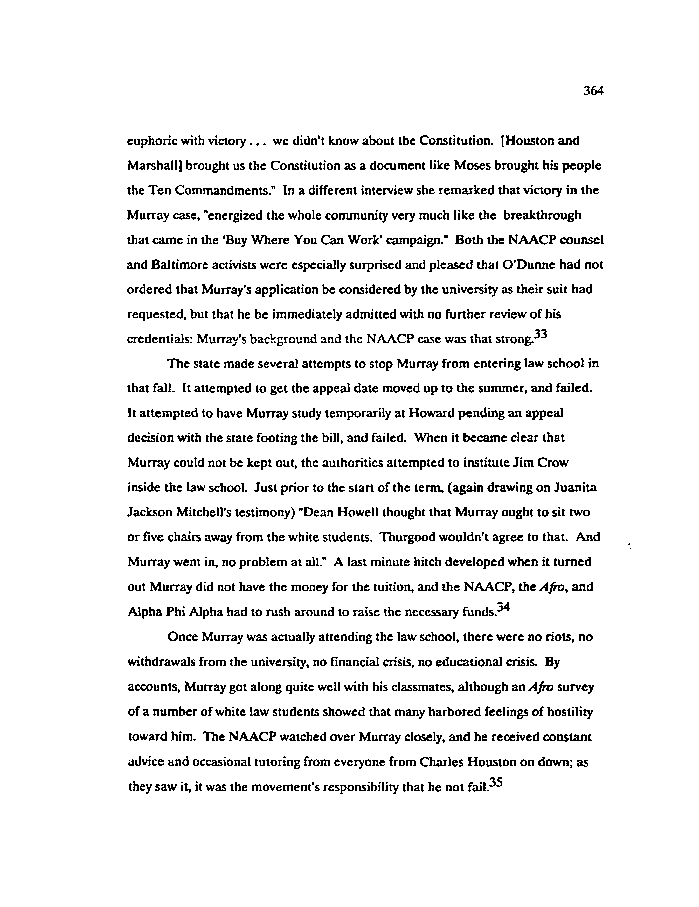|
364
euphoric with victory ... we didn't know about the Constitution. [Houston and
Marshall] brought us the Constitution as a document like Moses brought his people
the Ten Commandments." In a different interview she remarked that victory in the
Murray case, "energized the whole community very much like the breakthrough
that came in the 'Buy Where You Can Work' campaign." Both the NAACP counsel
and Baltimore activists were especially surprised and pleased that O'Dunne had not
ordered that Murray's application be considered by the university as their suit had
requested, but that he be immediately admitted with no further review of his
credentials: Murray's background and the NAACP case was that strong."
The state made several attempts to stop Murray from entering law school in
that fall. It attempted to get the appeal date moved up to the summer, and failed.
It attempted to have Murray study temporarily at Howard pending an appeal
decision with the state footing the bill, and failed. When it became clear that
Murray could not be kept out, the authorities attempted to institute Jim Crow
inside the law school. Just prior to the start of the term, (again drawing on Juanita
Jackson Mitchell's testimony) "Dean Howell thought that Murray ought to sit two
or five chairs away from the white students. Thurgood wouldn't agree to that. And
Murray went in, no problem at all." A last minute hitch developed when it turned
out Murray did not have the money for the tuition, and the NAACP, the Afro, and
Alpha Phi Alpha had to rush around to raise the necessary funds.
Once Murray was actually attending the law school, there were no riots, no
withdrawals from the university, no financial crisis, no educational crisis. By
accounts, Murray got along quite well with his classmates, although an A fro survey
of a number of white law students showed that many harbored feelings of hostility
toward him. The NAACP watched over Murray closely, and he received constant
advice and occasional tutoring from everyone from Charles Houston on down; as
they saw it, it was the movement's responsibility that he not fail.
|

